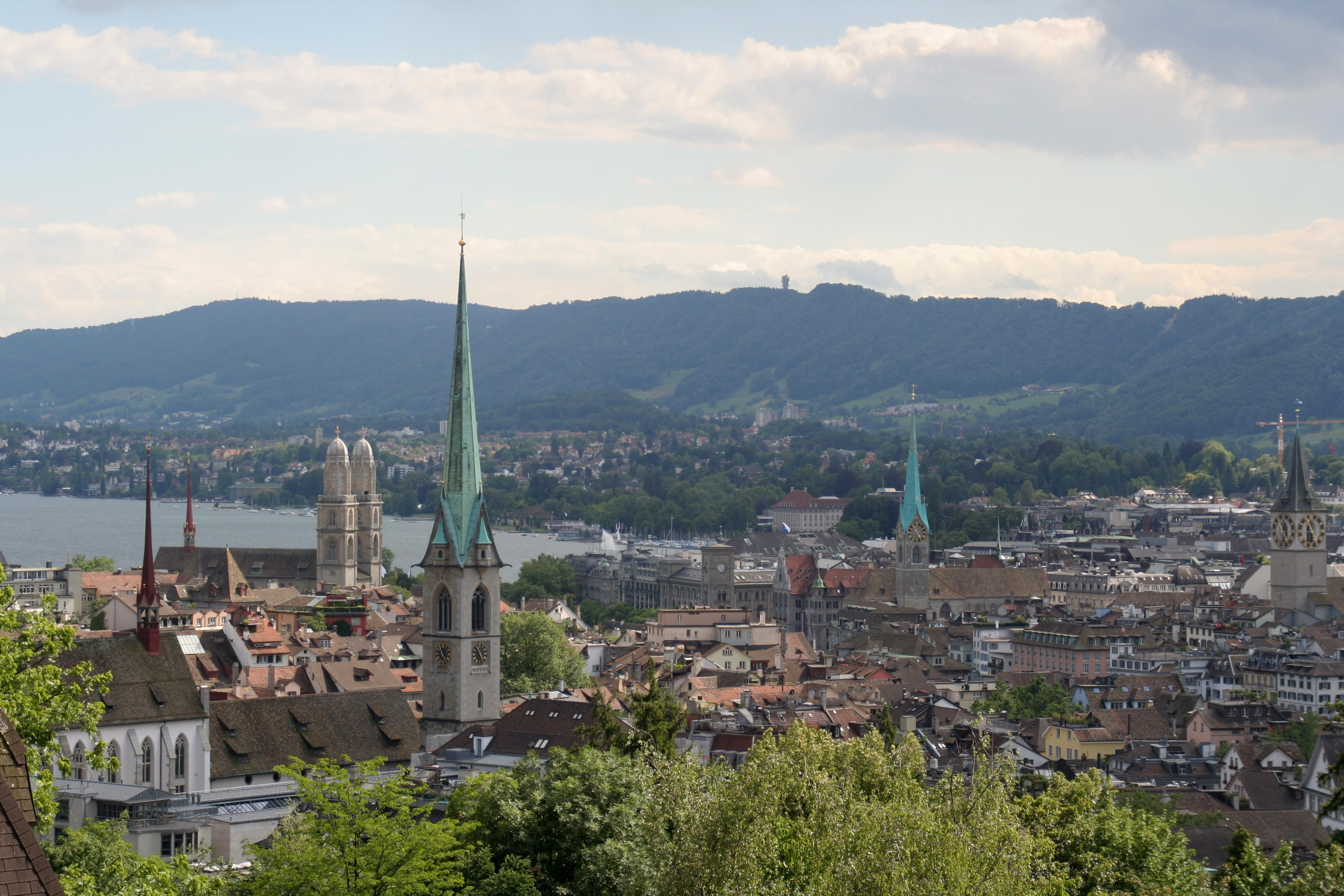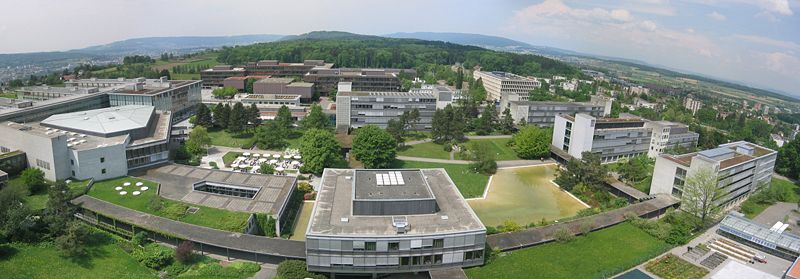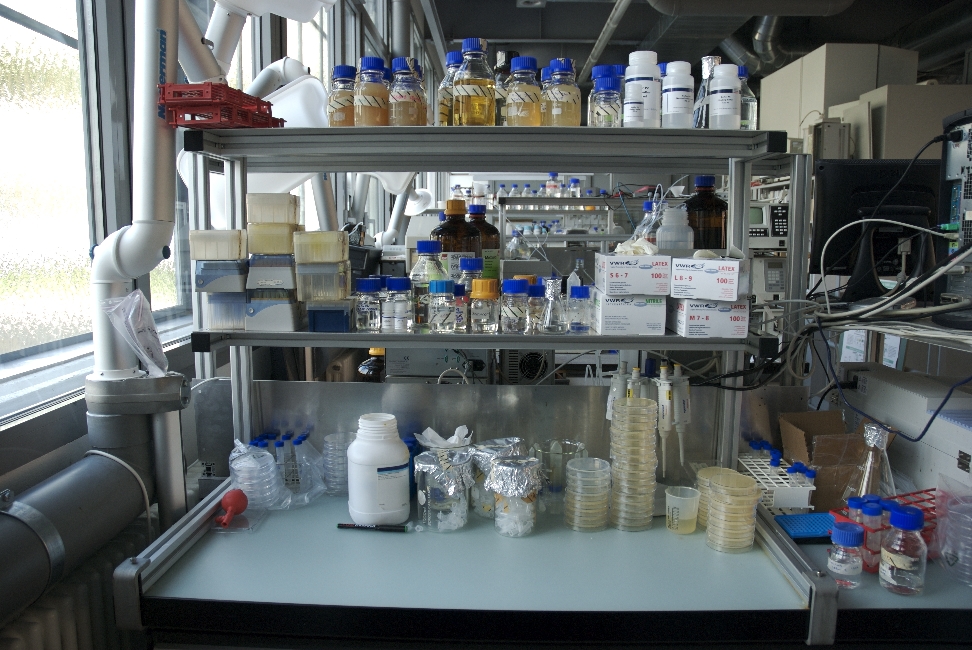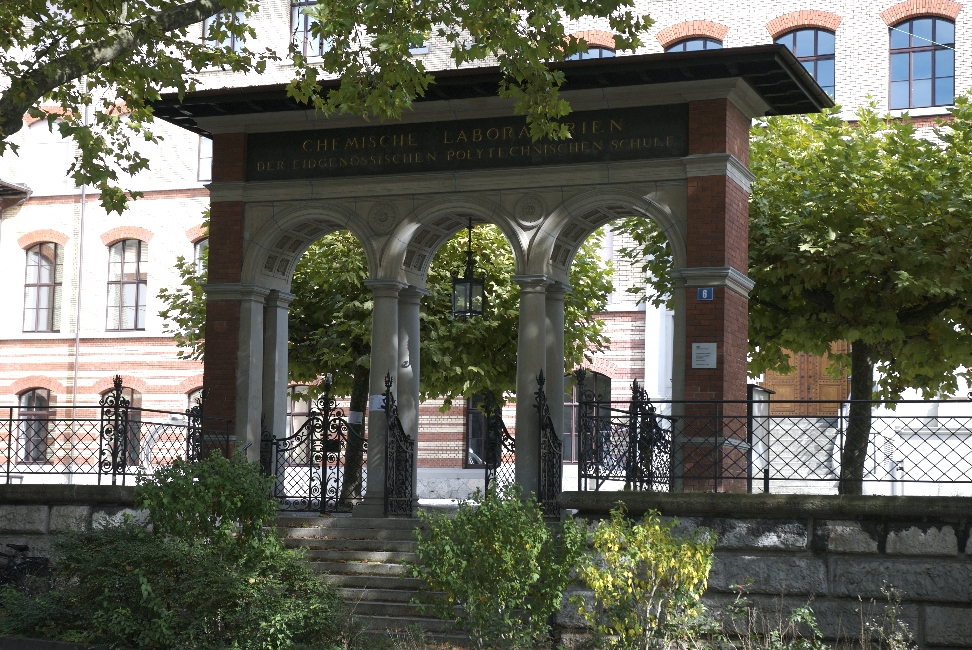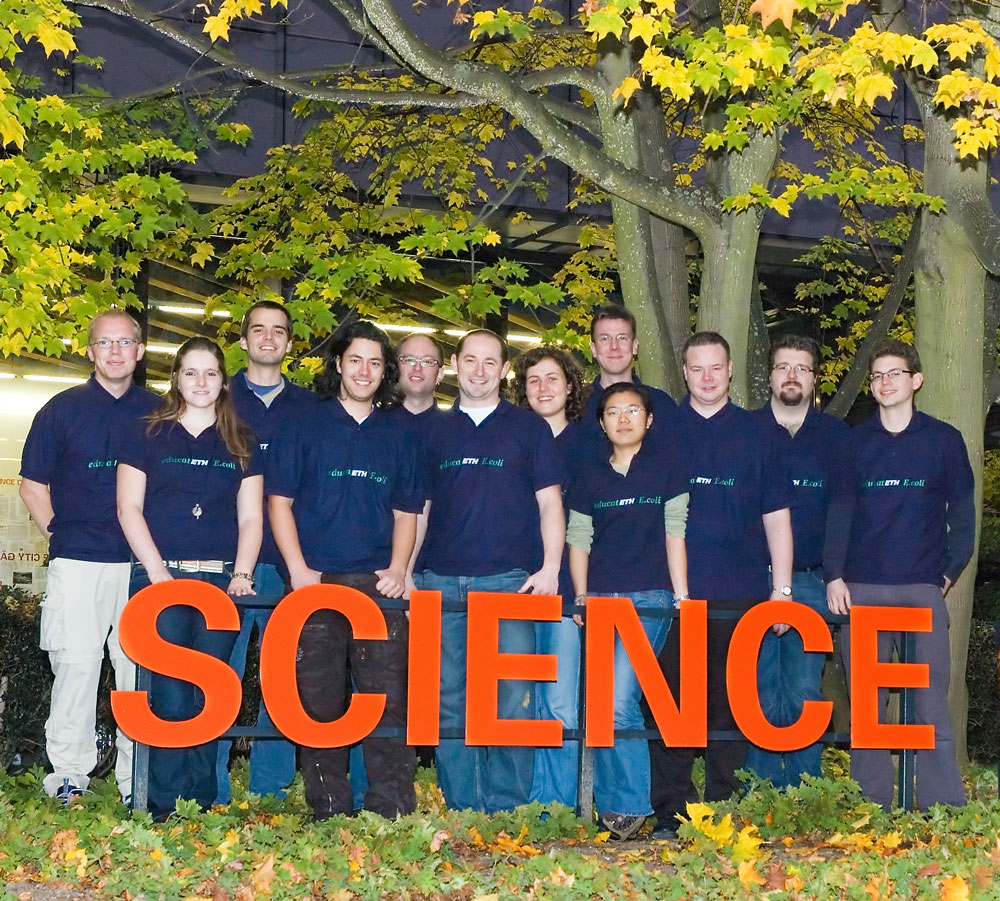Team:ETH Zurich/ETH Zuerich
From 2008.igem.org
m (→2007 iGEM team) |
m (→2007 iGEM team) |
||
| Line 35: | Line 35: | ||
[[Image:ETHZ_Group_photo_6.png|left|thumb|250px|2007 ETHZ iGEM Team]] | [[Image:ETHZ_Group_photo_6.png|left|thumb|250px|2007 ETHZ iGEM Team]] | ||
Excerpt from the [http://parts.mit.edu/igem07/index.php?title=ETHZ 2007 ETHZ iGEM Wiki]<br><br> | Excerpt from the [http://parts.mit.edu/igem07/index.php?title=ETHZ 2007 ETHZ iGEM Wiki]<br><br> | ||
| - | Multipurpose Cell Lines | + | '''Multipurpose Cell Lines''' |
<html><i></html> | <html><i></html> | ||
Revision as of 20:40, 28 October 2008
ZurichZurich is the largest city in Switzerland and the capital of the canton of Zurich. The city is Switzerland's main commercial and cultural center and sometimes called the "cultural capital" of Switzerland. The political capital of Switzerland is Berne. Zurich can be considered one of the world's preeminent global cities. According to several surveys from 2006 to 2008, Zurich was voted as the city with the best quality of life in the world.ETH ZurichThe ETH Zurich is a science and technology university in the city of Zurich, Switzerland. Locals sometimes refer to the ETH as "Poly", derived from its original name "Eidgenössisches Polytechnikum" or "Federal Polytechnic Institute". Like its sister institution "École Polytechnique Fédérale de Lausanne", it is an integral part of the ETH domain and directly subordinate to the "Federal Department of Home Affairs". The ETH is an internationally oriented university. It is a founding member of the "IDEA League" and the "International Alliance of Research Universities" (IARU). Additionally, it is a member of the "Top Industrial Managers for Europe" network. Our labFor our work on the iGEM project, Prof. Panke provided us with working space in his "Bioprocess Laboratory" of the ETH Zurich.
It is located in the CNB building in the center of Zurich.
Previous Teams2007 iGEM teamExcerpt from the 2007 ETHZ iGEM Wiki Our system has the ability to behave in different ways according to an internal toggle inside it switching states based on the chemical substances that the system is exposed to. The toggle states could generally be used to trigger events such as enzyme synthesis, transcriptional regulation, virion production, or even cell death. Therefore, one may view the bacterial cell line containing this system as a multipurpose cell line. By adding a certain chemical to a cell line, the latter may be trained to exhibit a desired behavior, and then it is not necessary any more to construct two independent cell lines. This means that one applies an “input engineering” instead of a “DNA engineering” approach. If one extends this idea to several multi-inducible toggle switches being harbored in the same cell line, the number of possible phenotypes increases to 2n, where n equals the number of toggle switches. For example, if one would have 5 such toggle switches inside a cell line, 32 different behavior patterns would be possible. For the purpose of creating a toggle switch that is activated in a specific phase only and not always (a multi-inducible toggle switch), as is required for stable biological automatons, we introduced the concept of double promoters to the Registry of Standard Biological Parts, which can be helpful for engineering systems which exhibit a desired behavior only at specific times. 2006 iGEM team2005 iGEM team |
 "
"
